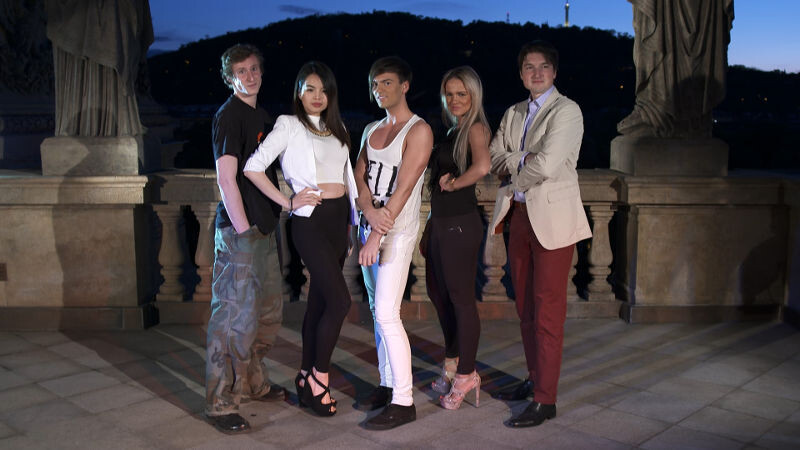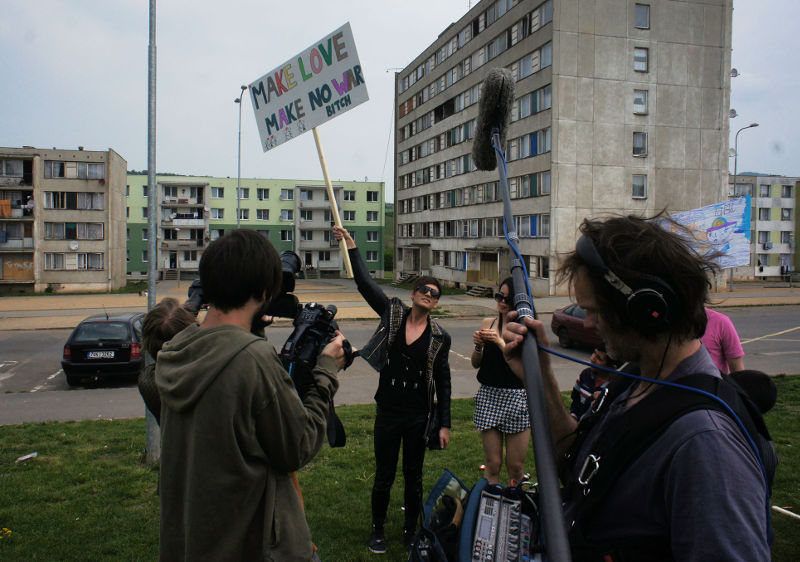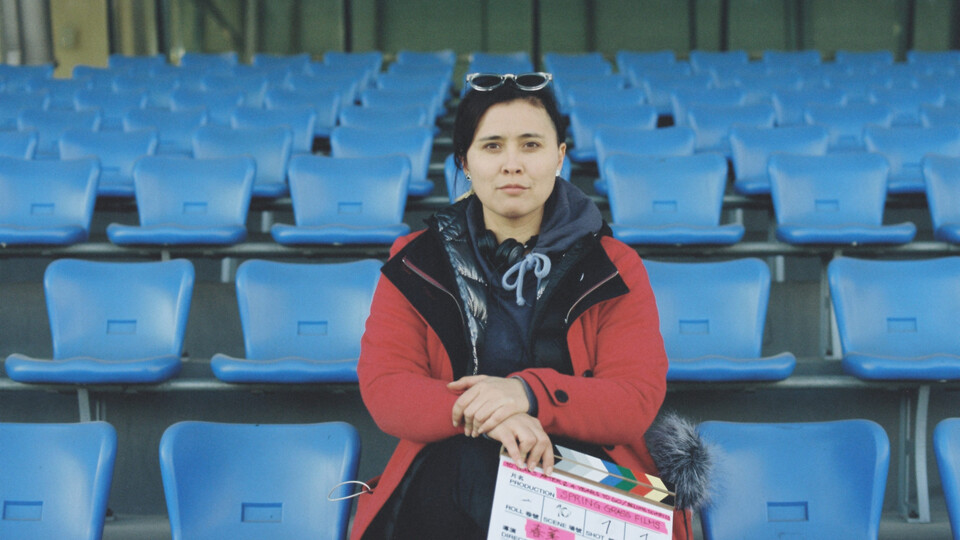Golden Youth vs Lower Classes
The five-episode docu-reality show entitled Golden Youth offers entertainment combined with some serious food for thought. This is the greatest novelty this new documentary format brings. In a docu-reality show, entertainment always works as a “sweetener” stimulating spectators to reflect on topics which they would certainly avoid in a traditional documentary shroud.
Each of the environments into which the five young girls and boys from Prague are cast deals with its own specific issues. The gruesome conditions in a slaughterhouse, where the protagonists work, bring us to realise the value of human work and animal life, i.e. issues that today’s consumer society comfortably ignores. In the town of Chanov we are faced with racial prejudices. A military survival camp puts the team spirit of the protagonists to a test showing how important is the new generation’s ability to deal with war conditions. The next episode, set in Romanian Banat, brings us back to rural roots. A finally, a small senior home becomes a place of direct confrontation with ageing and gives the protagonists an opportunity to contemplate their future.
After a long discussion, we opted for the title Golden Youth – used in the general sense of the word rather than as a label referring to kids of rich parents (although some of our actors definitely qualify for this category). In post-war France, the term “Jeneusse dorée” (“gilded youth” originating from the time of the French Revolution) referred to young people living a socially irresponsible lifestyle encouraged by the possibilities of a big city. Our protagonists may be defined similarly – young people pampered by city life. But what is so exclusive about life in Prague? For example, although they go to work, they can choose what kind of work they want to do. Unlike young people elsewhere in the country, they have never been in a situation when they would be forced to do work they do not like. But what actually makes them “golden youth” is the fact that they are unaware of their privilege. Our golden youth are young people who lead a socially uprooted life in the city – regardless of whether they are called generation Y or Z, or whether they spend 3,000 or 25,000 on a night out (the latter is much more likely in their case). They are extremely self-confident young middle-class kids with a clear set of values – first, to have fun, second, to have fun, and third – to have fun. All of them live in a “city greenhouse” with ready-made opinions and often also prejudices against people living outside their “funfair”. However, none of these opinions is based on personal experience. Our characters do not live at the top of society, and yet there exists an abyss between them and the people they meet during the filming, be it at the slaughterhouse or in Romanian Banat. To be honest, I myself didn’t expect the difference to be so huge.
Shooting in Chanov
The selected protagonists are extravagant or impractical or both. For the purposes of the docu-reality show, they are greatly valuable in that they are capable of verbal feedback (at least at times). Young gay boy Renáto is an eccentric whose ambition is to become a show-business star, Yeni is a runner-up Czech Miss Vietnam, Nicol is a photo-model from a magazine cover, Michal studies law and has a lined-out political career and Jiří “made it” as a lead actor in some movie and as a voice-over for Ron Weasley. On many occasions, they surprised us with their unpredictability. In most cases, their primary concern was not what they were doing but if they looked good doing it. And wherever they went, they caused fuss, unease, whooping cough after choking on food and minor heart attacks.
Unfortunately, we missed some interesting situations. Cameras were not rolling during a fight in Chanov following a dance party starring Renáto. With his typical assertiveness, Jiří bogarted his joint and got punched. Most of the local men defended him and pacified the attacker. Following suit of Sicilian vendetta, Michal wanted to organise a punitive expedition, but the locals fortunately dissuaded him from his intention. However, this boosted Michal’s popularity in the town and the surroundings and if he ever decides to run for local elections, his victory is guaranteed.
We also made an indelible impression in Gerník, the largest of six Czech villages in Banat in Romania. It is heaven on earth – at least for us mortals. After the protagonists insulted everyone around (making comments on their houses and clothes), Michal tried to dispel the uneasy atmosphere by playing the guitar in the local pub. Unfortunately, neither Chinaski, nor the poetic metal band Kabát did the trick. No eye was left dry after everyone joined in to sing a popular song by the fading normalisation pop star, Hanka Zagorová, at least on the part of the crew, but these were not tears of nostalgia. Our visit, as recorded in the local chronicle, will for a long time probably cause more concern than Turkish raids due to which these villages located on the border of Austria-Hungary with the Ottoman Empire were actually founded.
Translated by Barbora Rozkošná



